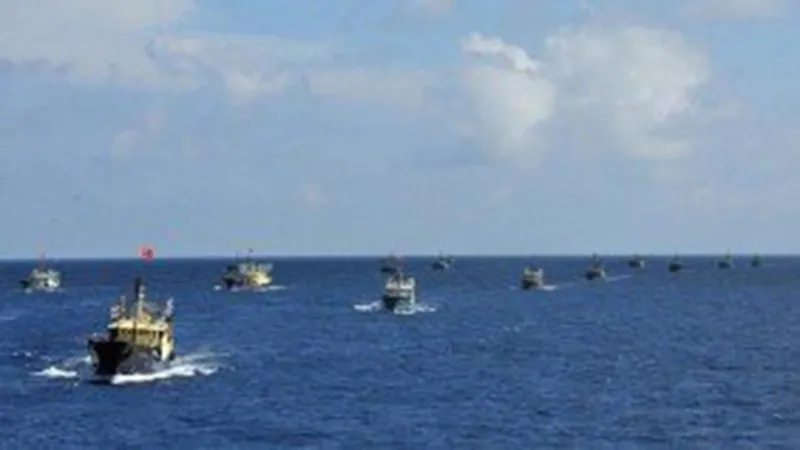-
CENTRES
Progammes & Centres
Location
Beyond 2015, South-South cooperation will have to increase and continue to support developing countries, with a special emphasis on poor and low-income countries in Asia and Africa facing sustainable development challenges.

Every year, September 12 is celebrated as the South-South Cooperation Day to commemorate the adoption in 1978 of the Buenos Aires Plan of Action for Promoting and Implementing Technical Cooperation among Developing Countries, which lies at the heart of South-South cooperation. This year was no exception.
South-South cooperation in its entirety refers to collaboration among countries of the South in all domains, including economic, political, cultural, environmental and technical. However, in recent times, the focus of South-South cooperation has taken the form of increased volume of trade, flows of foreign direct investment, regional integration initiatives, technology transfers and sharing of expertise in all areas. In fact, with the slowdown in the developed world post the global financial crisis of 2008, South-South cooperation has played a key role in helping the global economy deal with the global financial crisis and also laid a road map to deal with such crisis in future.
For instance, the G20, which has several emerging economies in it, played a key role in responding to the global financial crisis of 2008-09. Its decisive and coordinated actions boosted consumer and business confidence and supported the first stages of economic recovery. Hence, organisations like the G20 and Brics have been key promoters of South-South cooperation. It is a voluntary and horizontal partnership between the countries of the South with no strings attached.
In the last decade or so, the range and quantum of South-South cooperation has expanded significantly. India being a growing emerging economy, has contributed in various ways towards strengthening the cooperation. It has been an active player in development efforts with low income countries in Asia as well as Africa.
With impressive growth and greater openness in recent years, India has become a key player in the global economy. Despite still only accounting for only 1.7 share in world exports in 2015, India's trade and investment polices increasingly affect global growth and development prospects, be it through the supply of generic medicines to African countries or the expansion of trade and investment, including access to markets in India. The Foreign Trade Policy 2015-2020 aims at increasing India's merchandise and services exports to $900 billion by FY 2020.
India's growing economic power is changing the dynamics of global economic governance. Within the World Trade Organisation, its profile and influence has risen dramatically over the last decade. India positions itself as the voice of developing countries in global trade talks. Domestically, however, India's embrace of globalisation is not uniform, and related debates and policies on trade and investment issues are largely shaped by national needs.
Moreover, India's economic footprint is extended through the activities undertaken by its Government institutions. Through its lines of credit programme, the Indian Government helps facilitate economic flows to other countries. The LoCs enable Indian exporters, including Small and Medium Enterprises, to export a variety of products (industrial manufactures, consumer durables and capital and engineering goods) to importers in sub-Saharan Africa and South Asia without repayment risk. The Ministry of Finance and the Exim Bank are the two institutions responsible for the execution of the LoC programme.
India's technical support, training and institutional support through its ITEC (India Technical and Economic Cooperation) programme and through technology transfers, are much valued by low-income countries. Thus, while India's resources do not match resources invested by other countries competing for resources and markets, such as China, its positioning as a strong 'knowledge partner' adds significant value to its relationships with other developing countries.
In fact, over the years, India has consistently expanded its development cooperation portfolio through grant assistance to Afghanistan, Bangladesh, Bhutan, the Maldives, Myanmar, Nepal and Sri Lanka, for projects in infrastructure, hydro-electricity, power transmission and other sectors identified by the host Governments as priority areas for the development of their countries.
In the ongoing discussions on the post-2015 agenda, which are meant to identify international cooperation priorities and set the paradigm for global cooperation, India continues to be a key contributor, laying emphasis on South-South development cooperation as an important pillar of the sustainable development goals post-2015.
In fact, beyond 2015, South-South cooperation will have to increase and continue to support developing countries, with a special emphasis on poor and low-income countries in Asia and Africa facing sustainable development challenges. South-South cooperation is only expected strengthen in the future. It is here not just to stay but to consolidate and expand.
(The writer is a Senior Fellow with Observer Research Foundation, Delhi)
Courtesy: The Pioneer, November 4, 2015
The views expressed above belong to the author(s). ORF research and analyses now available on Telegram! Click here to access our curated content — blogs, longforms and interviews.

Kangkanika Neog Programme Associate Council on Energy Environment and Water (CEEW)
Read More +